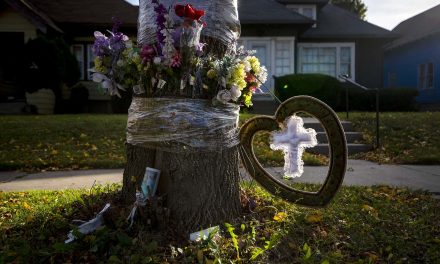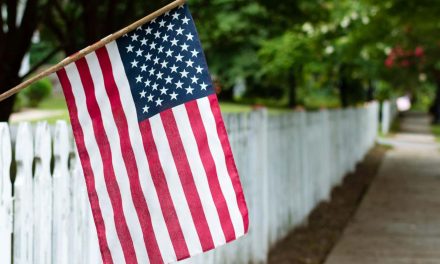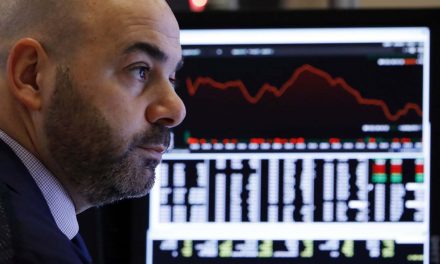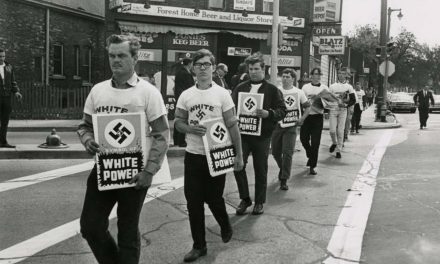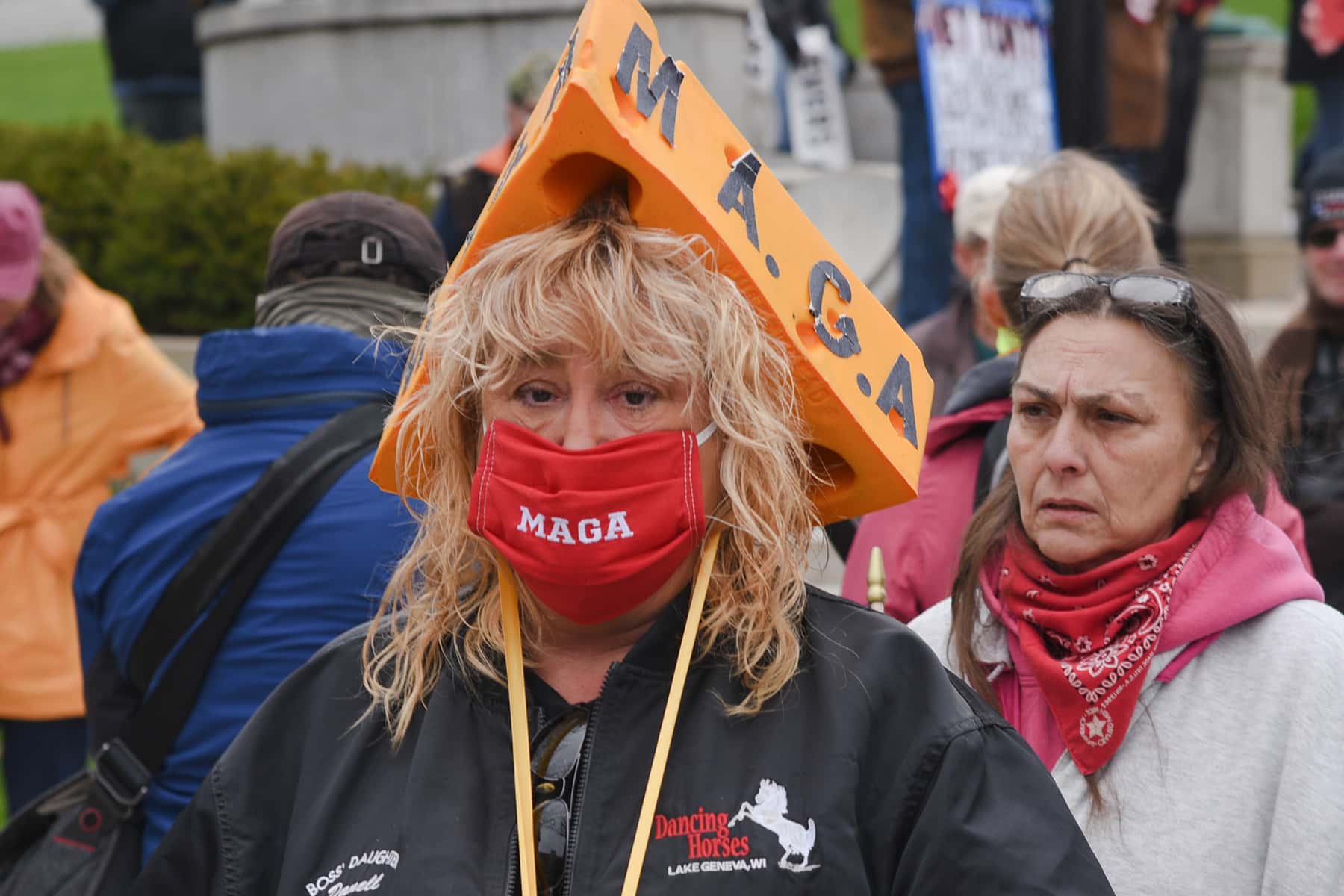
Republicans appear to be going all-in on the idea that some of us will have to suck it up and die in order to get the economy restarted. Can they win in 2020 with this message? Party leaders at both the state and national level seem to think so.
President Donald Trump made his pitch for reopening the country, even if it leads to more infections and deaths, during a visit to a mask factory in Phoenix on May 5,
“Will some people be affected? Yes,” Trump said. “Will some people be affected badly? Yes. But we have to get our country open and we have to get it open soon.”
Wisconsin Assembly Speaker Robin Vos promoted a similar message of comfort during a Wisconsin Health News webinar on May 6: “We certainly want to minimize the number of people who die,” Vos said. “But whenever we reopen the state, it is not going to be possible for us to prevent all deaths. That’s not possible.”
The United States now has the worst unemployment numbers since the Great Depression. But instead of expanding jobless benefits and emergency aid, Republicans are ginning up the idea that somehow we can’t wait for a more considered, public-health-minded approach before we start reopening business.
Part of the reason Republicans seem OK with killing people in order to get businesses running again might be statistics showing that the people who most likely to die are disproportionately black and brown — i.e. not Republican voters.
Racism and regional reopening
Wisconsin’s GOP legislative majority is pushing to reopen the state on a “regional” basis, on the theory that we could shut down denser (and more diverse), urban areas like Milwaukee, while white, rural and suburban communities can go back to business and stay safe.
“If you look at the data, we don’t have the issues that we have in some other areas of the state here in western Wisconsin,” said Representative Treig Pronschinske (R-Mondovi) at a press conference supporting regional reopening in Chippewa Falls. “I believe that’s because we’re responsible and we want to move forward and we’re safe.”
There is an unpleasant racial undertone to this sort of talk. For a variety of reasons, the victims of COVID-19 have been disproportionately black and brown.
In Milwaukee County, African Americans, who make up 26% of the population, accounted for 69% of all COVID-19-related deaths by April 8, and had twice as many positive tests for COVID-19 compared to whites, according to health department statistics highlighted in a brief by community groups and labor organizations supporting Safer at Home. Latinos in Milwaukee County accounted for nearly 25% of all positive COVID-19 cases by April 26, despite constituting only 15% of the total population.
The brief implores the state Supreme Court to consider the welfare of “scores of thousands of Wisconsinites employed in essential jobs, roughly one-third of the state workforce,” whose wellbeing, it says, the Legislature ignores when it demands a quick reopening.
But reopen proponents are increasingly using the same statistics to support a more callous, us-versus-them attitude toward a disease that is hitting people of color the hardest (because they are more likely to live close together in urban areas, be frontline workers who are more frequently exposed to the public, and have underlying health conditions that put them at risk). This attitude came to the surface when Wisconsin Supreme Court Chief Justice Patience Roggensack said of the spike in infections in Brown County “that was the meatpacking, though it wasn’t the regular folks of Brown County.”
The ‘regular folks’ delusion
In addition to being heartless, this kind of thinking is downright delusional. “Regular folks” — including rural white people — are just as likely to get COVID-19 as anyone else.
Governor Evers pointed this out on May 8, in answer to a question from the Examiner about legislative Republicans’ push for regional reopening.
“Number one, the virus doesn’t really know regions, it just goes where it goes,” Evers said.
There’s no telling if an area that appears to have a low infection rate one day will still have a low infection rate the next day.
“Second of all,” Evers added, “our rural areas of state … don’t have the same kind of public health support that other areas do.”
And finally, he said, “many of the businesses in rural areas depend on tourism … they rely on other people from outside that region coming to that region.”
“The virus isn’t particularly attuned to infecting somebody locally versus somebody that’s there [visiting]” Evers added dryly.
Political suicide
Nonetheless, as a matter of politics, the GOP is doubling down on the idea white people should circle the wagons and reopen white communities, while subjecting urban communities to quarantine. Apart from the folly of this approach from a public health perspective — because no wagon circle is going to keep out a virus — it may also turn out to be political suicide. Most people are not buying the idea that we need to toss aside statewide stay-at-home orders in order to fight “tyranny.”
While Republicans are barnstorming the state to demand reopening small towns and rural areas, and President Trump is tweeting his support for protesters demanding “freedom” from stay-at-home orders, according to a recent survey by Public Policy Polling, citizens trust their governors significantly more than Trump to keep them safe from COVID-19. In Wisconsin, Evers beats Trump on this score by a margin of 54% to 39%.
Reopen protesters who are storming state capitols carrying semi-automatic weapons and railing against “tyranny” do not represent a majority of voters. The language of these protests comes directly out of the white supremacist conspiracy theories that inspired militia members in the 1990s, including domestic terrorist Timothy McVeigh, who blew up the federal building in Oklahoma City.
Far-right extremists with ties to neo-Nazis and the militia movement turn out to be behind one of the most prominent reopen groups, which has helped organize rallies all over the country, including in Wisconsin, according to a recent investigation by The Guardian. Sadly, Trump has helped bring such rightwing groups, and their toxic master-race ideology, into the mainstream.
Steven Miller has deployed his hateful anti-immigrant views to shape U.S. immigration policy as a key Trump advisor, and used the pandemic as an excuse to crack down on immigrants, whom he had already claimed were bringing disease across the border. Miller’s wife, who is Vice President Mike Pence’s press secretary, recently tested positive for COVID-19, proving that the virus does not discriminate based on race or immigration status.
Here in Wisconsin, it was shocking to hear state Supreme Court Justice Rebecca Bradley invoke far-right conspiracy language about “tyranny” to describe Safer at Home, suggesting that the Evers administration might start rounding people up and putting them in social-distancing internment camps. The Trump era has brought out the ugly and the crazy in American politics. Not all conservatives embrace this sort of thinking, of course. But the whole Republican Party is being dragged along by it.
How to organize in a pandemic
That’s going to hurt the GOP in November, says Justin Myers, the CEO of For Our Future and For Our Future Action Fund, a progressive field program that operates in seven states, including Wisconsin.
“On a personal level, as someone that has had a death in the family, it’s disheartening,” Myers says of the rallies to reopen the states.
But he also believes GOP support for those rallies and their rhetoric about “tyranny” is politically doomed. Pitting unhappy working-class people who have lost their jobs against people who are fearful of getting sick doesn’t make much sense — because a lot of people belong to both groups. There are only so many hardcore, gun-toting libertarian types who want to smash tyranny and overthrow the state. Trump and other Republicans will have to win more than his base to be reelected.
That’s where Myers’ work comes in. His group does political organizing with community partners in Florida, Michigan, Nevada, Ohio, Pennsylvania, Virginia and Wisconsin. Member groups (including Voces de la Frontera and Milwaukee BLOC) work all year long on issues, legislative advocacy and campaigns to win elections and help build lasting power.
The key to beating Trump in 2020
Myers is proud of the work they did to organize in Wisconsin in 2018, and in the recent April elections, including the state Supreme Court race and school-funding referenda in Milwaukee and Racine. Personal contacts among people who know each other are the key to this work.
They employ a “relational voter program” — a grassroots organizing approach that involves people in communities speaking directly with their neighbors about the issues that matter to them. This replaces parachuting in political operatives around election time, and Myers and his community partners believe it can help turn the tide, nationwide, in 2020.
As Christine Neumann-Ortiz, executive director of Voces de la Frontera, put it in a recent op-ed in the New York Times: “For years, including in 2016, Democrats have relied heavily on expensive TV ads and traditional canvassing where paid staff members from out-of-state use out-of-date voter lists to contact people they don’t know and will never see again.”
That approach failed the Democrats when Trump won, she says. Trump won Wisconsin by a narrow margin of less than 23,000 votes not because of a surge in Republican votes, Neumann-Ortiz writes, “rather, black, Latino and young voters did not turn out as fully as they could have.”
The key to beating Trump in 2020 is to engage people of color and young voters, she continues. Voces and the entire For our Future network, is using the Relational Voter Program (RVP), in which Wisconsin is a leader, to do just that.
“We have this great program Wisconsin,” says Myers, “and we’re going to make sure that we’re utilizing it in places like Pennsylvania, Michigan and Ohio.”
Voter outreach through RVP’s “trusted messenger” approach is particularly powerful now, during the pandemic, he adds.
“There’s so much disinformation out there now,” he says. “Someone is more prone to believe their cousin, their brother, the person that they sit next to every day at work.”
In March, Wisconsin organizers had to turn on a dime, to retool their voter outreach approach to conform to Safer at Home, switching to digital outreach and ditching in-person door-knocking. While the digital divide complicates everything from online school to absentee voting, for voter outreach, it hasn’t been as big a problem, Myers says. Unlike computers and Wi-Fi where there’s a big gap, cell phones and data plans are more universal.
“A high threshold of people — and all types of communities, including impoverished communities — use their phone as their primary source of either communication or entertainment,” he says. Organizers were already using Facebook, Twitter and text messaging to do outreach. Through an intensive, last-minute training program, they were able to switch to an all-digital strategy between mid-March and the April 7 election, and win some major victories.
This, says Myers, is the model for November.
Tim Holte
Originally published on the Wisconsin Examiner as The GOP tests 2020 campaign theme: ‘Some of you will have to die’
Donate: Wisconsin Examiner
Help spread Wisconsin news, relentless reporting, unheard voices, and untold stories. Make a difference with a tax-deductible contribution to the Wisconsin Examiner


